Guide
Enhance Customer 360 with second-party data using AWS and Dremio
- By integrating second-party data with AWS and Dremio, organizations can break down data silos and unlock deeper insights that enhance the Customer 360 experience and drive strategic outcomes.
This article was co-authored with Alex Merced, a Senior Technical Evangelist at Dremio.
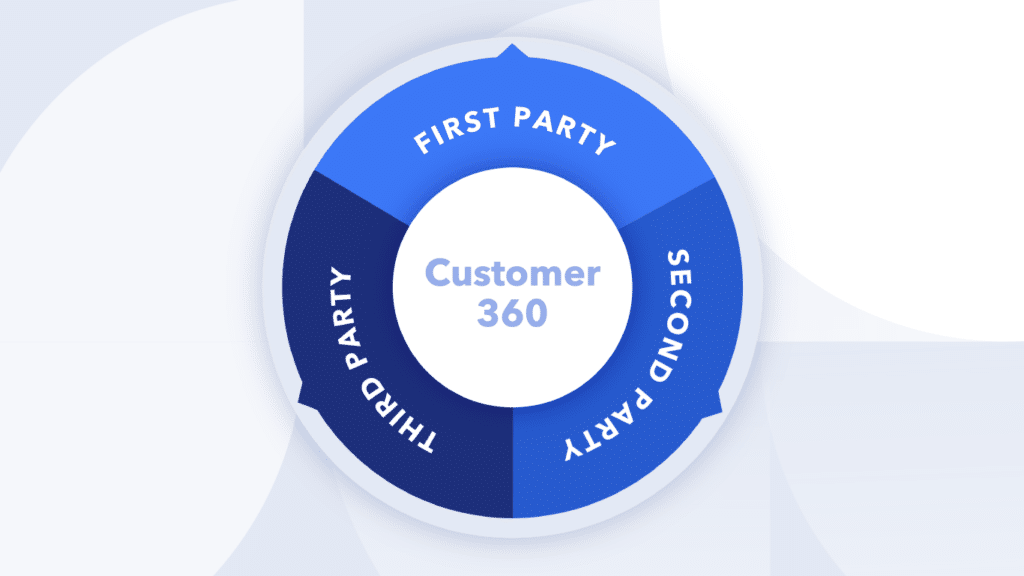
Operational analytic capabilities are foundational to delivering the personalized experiences that customers expect.
While first and third-party market data are often the natural starting point, organizations are increasingly discovering that second-party data—the information exchanged securely and confidentially through partnerships and other strategic vendor relationships — are the differentiator that elevates the customer experience to new levels.
As businesses embrace ecosystem-led growth, second-party data plays a vital role in enriching the Customer 360 model. A Sales Operations data lakehouse built on platforms like Dremio and AWS can help unify and deliver this data to stakeholders and provide actionable insights.
Unlock the value of second-party data
The Customer 360 model has been around for years, but second-party data presents an opportunity in today’s paradigm shift to ecosystem-led growth. If you’re unfamiliar, second-party data refers to the information exchanged securely and confidentially between two businesses, tailored to their unique relationships. Most organizations have hundreds, if not thousands, of suppliers, vendors, and partners within their network that generate a surplus of fragmented, dynamic, unstructured, and varied data, which often lands in the void. With the right approach, second-party data can potentially be harvested as a strategic asset and support activities such as gaining a deeper understanding of buyer intent, uncovering cross-sell and upsell opportunities, and more effectively engaging your customers.
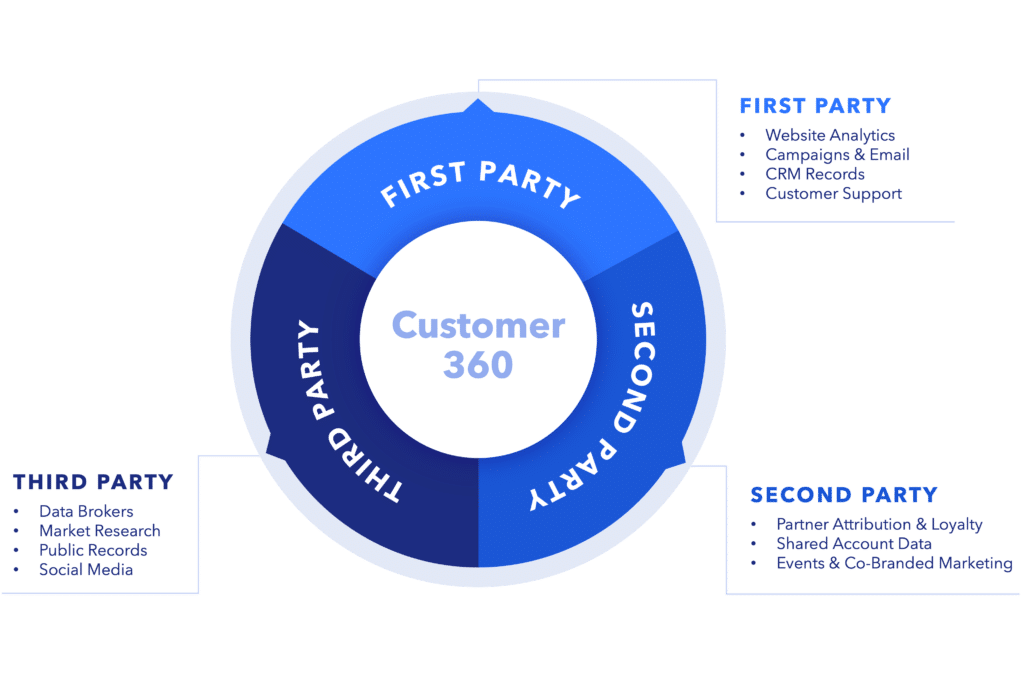
The reality is that most second-party data exists in one-off spreadsheets, buried in transactional systems, or siloed across departments, making it difficult to access and leverage effectively. Here is a lightweight 3-step approach for discovering, assessing, and mapping second-party data to value-driven use cases unique to your organization.
Divergent discovery
Go beyond the obvious to uncover valuable data from unexpected partnerships, joint marketing, or unique sales insights.
Assessment
Evaluate data quality and governance practically, ensuring secure integration into systems like Dremio without unnecessary complexity.
Capture & mapping to value
Connect data to business priorities like analyzing market segments, clarifying buyer personas, performing lead scoring, uncovering cross-sell / up-sell opportunities, or improving customer retention.
The backbone of Customer 360 is a sales operations data lakehouse
Leveraging second-party data requires the right tools and frameworks to streamline integration. Second-party data is highly variable; the organizations you collaborate with are in a constant state of change. This data also tends to be of low accuracy (veracity) and heavily fragmented. A sales operations data lakehouse —centralizing ERP, marketing automation, partner data, and third-party data—can solve many of these issues.
Tools like Dremio, a unified lakehouse platform, help organize this heterogeneous data into a primary access point and pipe it back into core systems for real-time insights. For most data, it makes sense to land it into a medium like Amazon S3 for hyper low-cost and scalable storage as a data lake. For our use case, Dremio provides connectors and tools to ingest and model this data and give it that data warehouse “feel” with fast query times and well-structured information. Dremio has multiple interfaces such as JDBC/ODBC, Apache Arrow Flight, and a REST API that can be used to access the data and write it back to core systems such as Salesforce, Dynamics 365, or HubSpot for use by end-users at scale. In addition, power users can leverage tools like Tableau, Power BI, or SQL to query data directly from Dremio, making insights generation fast and intuitive for advanced use cases. Here’s an example of that lifecycle in action:
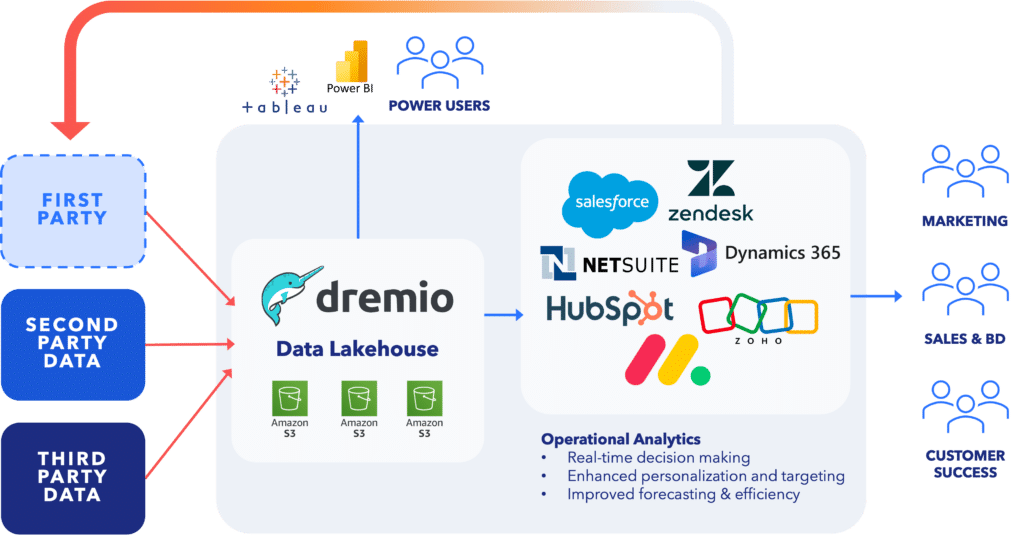
There are many data tools out there to automate workflows, orchestrate data sharing, virtualization, and delivery. Furthermore, many platforms provide analytical modules to support Customer 360-like capabilities natively. However, Dremio is well-positioned with the necessary functionality, extensibility, and scalability to tackle the unique complications inherent in unifying second-party data. For example, you can either connect data sources directly or ingest it as Apache Iceberg into your data lake. Dremio’s integrated lakehouse catalog is built to provide tracking for these views. Furthermore, feature sets like the Reflections feature are even more powerful when working with Iceberg tables with incremental and live updates.
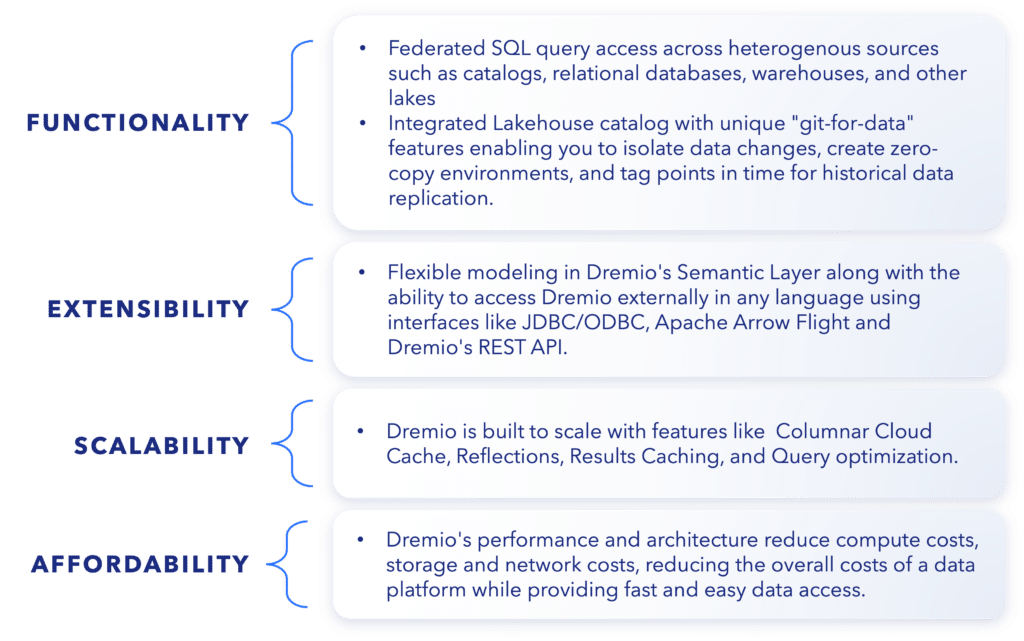
Delivering actionable insights across the ecosystem with a powerful semantic model
Though not as trendy as AI or machine learning, the most critical tool to unlock the value of your data strategy is a well-designed semantic model. Once your data is available in Dremio, your data engineering team can define the semantic model as a series of layered, SQL-based views to provide structure. Given that second-party data often arrives in highly diverse formats, the semantic model acts as a bridge, standardizing and organizing data for consistent insights. Furthermore, organizations are always evolving. This constant change—whether through shifts in strategy or customer profiles—can cause stress on data models and operational analytics. A well-designed semantic model can absorb these fluctuations.
This process ensures that your business users receive clean, actionable data that fuels better decision-making. The accompanying image serves as a framework for architecting your model, illustrating best practices within Dremio for delivering quality data sets.
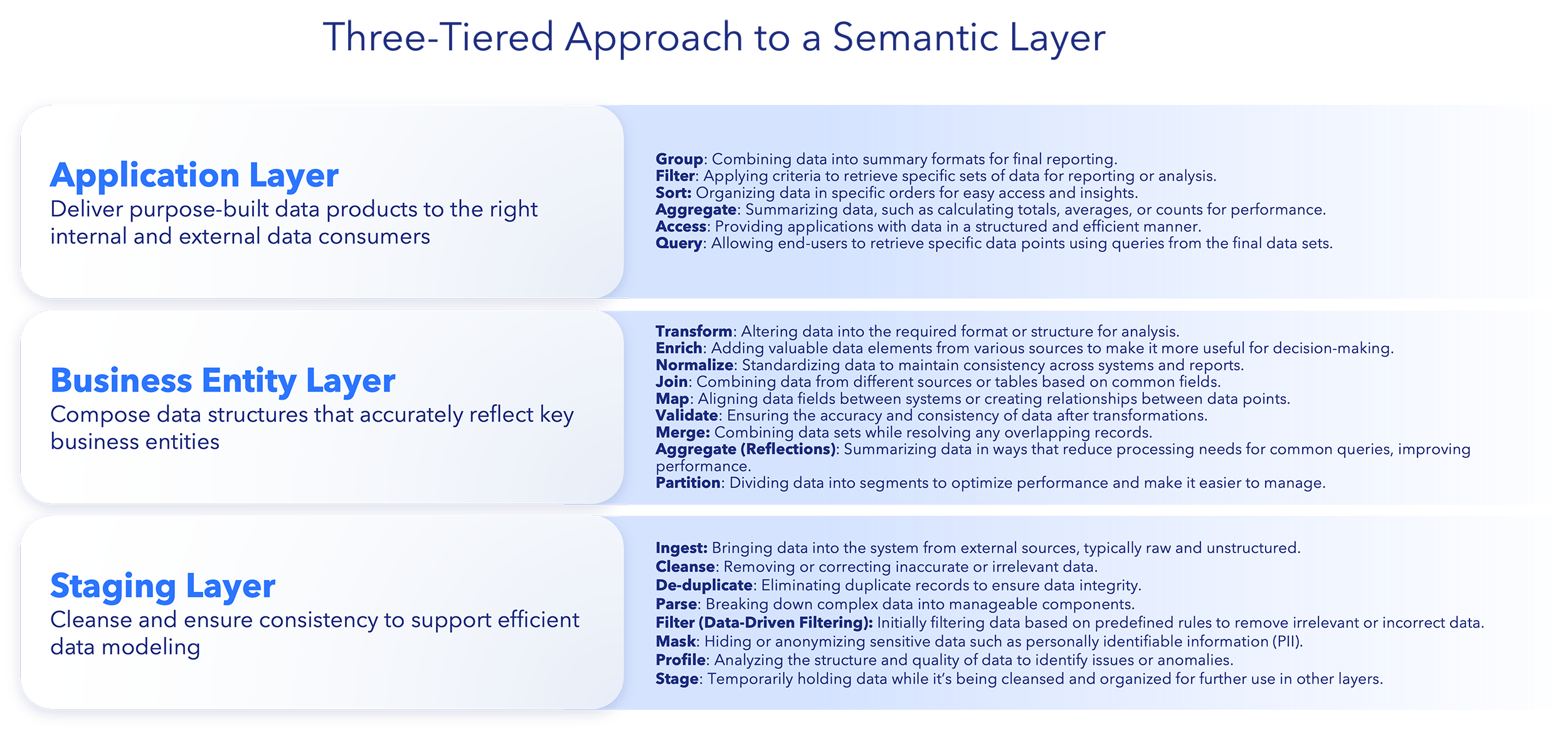
A prescriptive yet flexible semantic model is not a one-size-fits-all solution; it demands precision and foresight. The best data engineering teams work closely with business units to align on value drivers and future needs. By doing so, they build solutions that not only solve current problems but also anticipate future requirements.
Conclusion
As organizations continue to embrace ecosystem-led growth, second-party data is becoming a key asset for creating a comprehensive Customer 360 view. Tools like Dremio are critical for breaking down data silos and providing real-time access to valuable insights. By simplifying data integration and making it actionable, these capabilities empower teams to make data-driven decisions and collaborate more effectively, ultimately delivering superior customer experiences and driving growth.

This article was co-authored with Alex Merced, a Senior Technical Evangelist at Dremio.




















